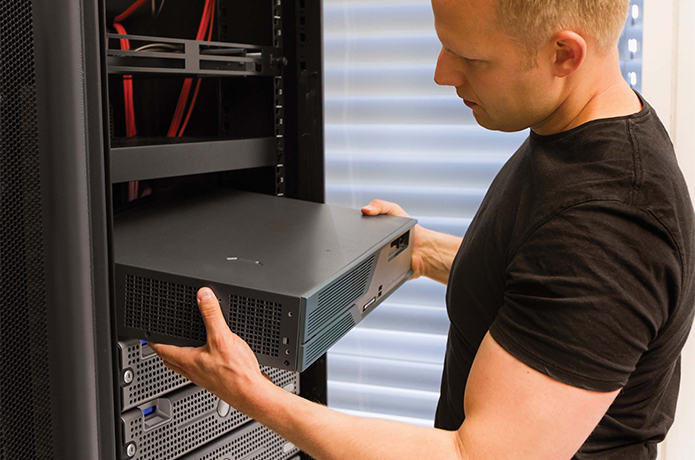 When was the last time you checked the battery inside your uninterruptible power supply?
When was the last time you checked the battery inside your uninterruptible power supply?
Perhaps, like most people, you expect your UPS battery to continue providing backup power until your UPS requires replacement. However, rather than replacing the entire unit, there’s a more proactive solution: replacing the battery! Performing a UPS battery replacement every three to five years will extend the life of your UPS so it continues to provide required runtimes.
Battery Best Practices
Battery service and maintenance are crucial to UPS reliability. In order to maximize your battery’s life and get the most out of your investment, it helps to understand how batteries react to different environments and usage patterns.
Here are four tips for extending the life of your UPS:
1) Install your UPS in a cool, dry location.
Rated battery capacity is based on a maximum operating temperature of 77° F (25° C). Any variation from this temperature can alter performance and shorten a battery’s life. When installing your UPS, keep in mind that for every 15 degrees above 77, a battery’s expected life is cut in half. Leave at least two inches of space on each side of the unit for proper airflow, and do not place the UPS near an open window or high-moisture area.
2) Store replacement batteries properly.
It’s a good idea to keep replacement batteries on hand, but you shouldn’t store them for extended periods of time. New batteries can be stored for up to 12 months; if kept too long, they will have a shorter lifespan. To maximize life expectancy, store batteries in a location with a temperature of 50° F (10° C) or below.
3) Perform preventive maintenance.
Without regular maintenance, your UPS device battery may experience heat-generating resistance at the terminals, reduced protection and premature failure. Preventive maintenance extends battery life by preventing loose connections, removing corrosion and identifying bad batteries before they affect your application.
4) Use energy-saving devices.
When connecting devices to your UPS, make sure they are efficient. Devices with low power consumption keep the temperature of your UPS at a manageable level, thus extending its lifespan.
Battery Replacement
Despite effective maintenance practices and favorable operating conditions, battery capacity depletes over time, reducing the amount of runtime a UPS delivers to equipment. Humidity, ambient temperature, depth of discharge and frequency of recharge all contribute to the loss of battery capacity. Most sealed lead-acid batteries have a lifespan of three to five years, and providing a new battery restores the UPS to its factory-fresh state.
A common sign of battery depletion is decreased runtime when operating in battery mode. If your battery is at least three years old, is installed in a high-temperature environment or constantly operates in battery mode due to consistent utility problems, it may need to be replaced.
But don’t worry—battery hookups are easy! Take a look at this video for step-by-step instructions.
Tripp Lite offers a complete line of UPS products, including replacement battery cartridges for a wide range of models. Our RBC Selector Guide, available on the Tripp Lite website, can quickly and easily determine the number and type of batteries required for a UPS by selecting from hundreds of UPS models, including those from other manufacturers.
When you replace an old, depleted UPS battery with a genuine Tripp Lite battery, you can extend your UPS system’s runtime up to 30%! That’s right—compared to many third-party batteries, Tripp Lite replacement batteries offer longer runtimes and the assurance of quality and reliability that only a UPS industry leader can deliver.





